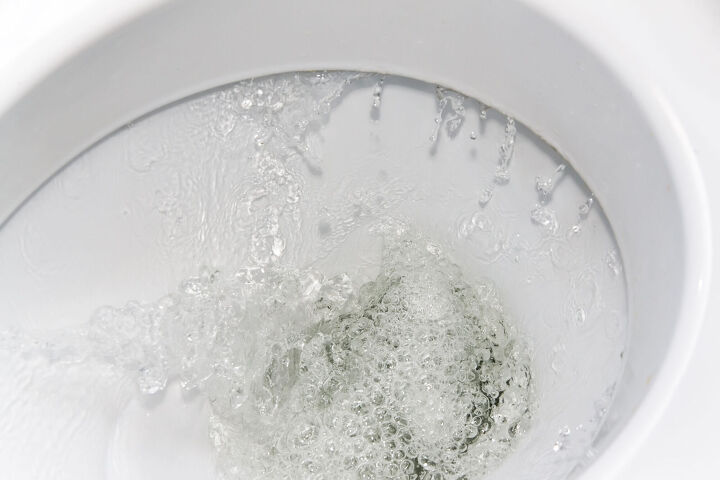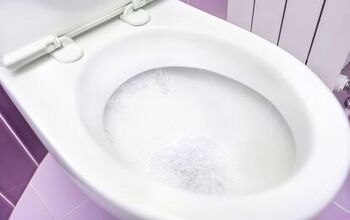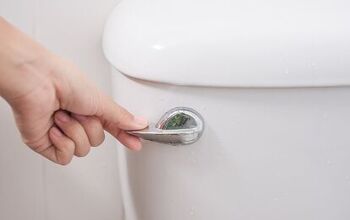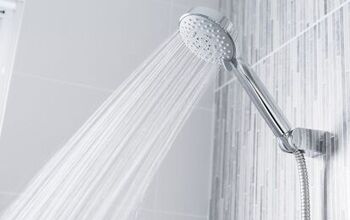Why Does My Toilet Flush Slow? (Possible Causes & Fixes)

There’s nothing more annoying than a weak, swirling toilet that takes forever to flush everything down the drain. In some cases, toilets that flush slow don’t even remove all of the waste. A slow flushing toilet no longer flushes as effectively, which can lead to clogs or potentially something worse.
If you’ve noticed that your toilet is flushing slower than it used to, you’re not alone. This is a common problem that many homeowners face. Fortunately, there are a number of reasons – both basic and complex – why your toilet flushes have slowed down. Whether it’s caused by a clogged S trap, too much debris in the system, a damaged fill valve, blocked jet holes, hard water, or the age of the toilet, there are measures you can take to have your slow flushing toilet back to functioning as normal.
Do You Need to Install or Repair a Toilet?
Get free, zero-commitment quotes from pro contractors near you.

Reasons Why A Toilet Flushes Slowly
We’ll go over the eight most common reasons a toilet may be flushing slower than normal, along with the steps you can take to fix the issue.
1. Clogged S Trap
The S trap, as the name suggests, is an S-shaped pipe that sits just below the toilet bowl on the left side of the fixture. Due to its curved shape, it’s very easy for waste, debris, and (primarily) too much toilet paper to get lodged inside. If this clog isn’t properly dealt with, the result is a slow flushing toilet or one that won’t flush at all.
Solution: In most cases, a plunger will fix a clogged S trap. If the water in the bowl hasn’t been depleted, you’ll first need to remove all but roughly two inches of water. Then, position the plunger over the drain at the base of the toilet and pump up and down rapidly. This should unclog the S trap. However, make sure that you don’t plunge too hard, as you could actually blow out your pipes.
2. Too Much Debris
Oftentimes, the most common cause of a clogged toilet is using more toilet paper than the system can manage this is especially true for older homes and toilets. Although toilet paper is designed to dissolve in water, it is notorious for leaving behind a sticky residue.
Some toilet papers are thicker than others and while they may offer more comfort for the user, they are more difficult to flush. This problem is exacerbated when you have cracks, corrosion, or misalignments in your pipes or sewer line. These issues will catch the debris that flows by.
Clogged drains are most commonly occur when someone accidentally flushes something down the drain that they shouldn’t. Be very mindful of what you’re putting into your drains and don’t treat them like a garbage can – especially your toilets.
Solution: Similar to fixing a clogged S pipe, a plunger should be enough to fix too much toilet paper and debris in your system. If it doesn’t work, however, you may want to consider calling a plumber to diagnose and fix the issue.
3. Damaged Fill Valve
The purpose of the fill valve is to refill the toilet tank after each flush. The strongest indication that there’s a problem with the fill valve is when the water continues to run even after the toilet has been flushed. A toilet that runs constantly isn’t only annoying, but it’ll also raise your water bill. In this case, the fill valve is likely old, worn out, and needs to be replaced.
Solution: To replace your toilet’s fill valve, you first want to shut off the water supply to the toilet. Then, open the tank lid and flush it to remove all the water from the tank. Disconnect the water hose from the fill valve by unscrewing the nut that connects them. Now, remove the valve by pulling it upwards from the base and replace it with a new fill valve. Reconnect the water hose, turn the water supply back on, and flush the toilet to test functionality.
4. Faulty Flapper Valve
The flapper valve is a rubber stopper that can be found at the base of the toilet tank. It creates a seal that prevents water from entering the bowl. By pressing down on the toilet handle, the flapper is lifted and water travels to the bowl to trigger the flush. It’s very common for flapper valves to wear out and a running toilet is also a sign that there’s something wrong with the flapper.
Solution: Replacing the flapper yourself is an easy process, or you could choose to hire a plumber to do it for you. Simply turn off the water supply, flush to remove the water in the tank, remove the flapper by detaching it from the handle, and put a new one in its place. Make sure you follow the instructions that come with your new flapper to ensure that you attach it properly.
5. Blocked Jet Holes
Another common reason why your toilet may be flushing slowly is blocked jet holes. Upon flushing, fast-moving streams of water (jets) fill up the toilet bowl. These streams come out of small jet holes (also called inlet holes or rim holes) found under the rim of the toilet. If not cleaned frequently and thoroughly, the holes can become clogged over time with hard water mineral deposits or bacteria. What results is a slow flushing toilet.
Solution: First, you want to locate the jets by using a small mirror to assess the problem. Bacteria growth will appear like black or dark orange spots, while mineral deposits are scaly and lighter in color. For bacteria, pour a solution of 1 part bleach to 10 parts water into the tank’s overflow tube, wait about 10 minutes, and flush. Then, clean the holes using wire or a stiff bristle brush and the mirror, before scrubbing the entire underside of the rim with a toilet cleaner.
For mineral deposits, you’ll want to use vinegar instead. Heat up some vinegar so that it’s warm to the touch, not scalding. Pour it into the overflow tube and wait about an hour before flushing. Then, clean the jets using a mirror and wire or a stiff bristle brush. Repeat the process as needed before cleaning the underside one final time with a specialized toilet cleaner.
6. Not Enough Water in the Tank
This is an easy one to diagnose. If you notice that your toilet is flushing slower than usual, take off the tank lid to examine the inside. The water level should be approximately half an inch below the top of the overflow tube. If not, there isn’t enough water to create sufficient suction in the bowl to flush – resulting in a flush that’s too weak. Fortunately, this problem is usually a pretty easy fix.
Solution: Fill up a bucket with water and pour it into the tank, avoiding pouring any water into the overflow tube. The goal is for the water level to be about ½ an inch below the top of the overflow tube. The overflow tube is a vertical tube that has an opening at the top and a rubber pipe going into it. Once you’ve filled up the tank to the appropriate level, flush a couple of times to test.
If the tank still doesn’t fill up high enough, a couple of different things could be going wrong. You may have low water pressure, unsuitably adjusted fill valves, or a trip assembly that is malfunctioning. Regardless, each of these issues is an easy fix for your local plumber.
Do You Need to Install or Repair a Toilet?
Get free, zero-commitment quotes from pro contractors near you.

7. Hard Water
If you have hard water, this means you have a lot of dissolved minerals in your pipes – such as calcium and magnesium. You can usually tell that you have hard water after you wash dishes, as it appears like soap scum leftover on your glasses. When it comes to your toilet, these minerals can build up inside your pipes, reducing the size of the pipe until the water flows slower.
Solution: The fix for mineral buildup in your pipes is to pour about a quart of white vinegar into your overflow tube. Let the vinegar sit overnight. Depending on how much buildup is in your system, it may take a while for the vinegar to loosen up and dissolve. The following morning, flush the toilet a couple of times to see if the issue has been resolved. If not, you may need to call out a professional plumber to take care of the buildup, or consider investing in installing a water softener.
8. Toilet Age
Truthfully, your slow flushing toilet may be simply caused by an old toilet. As toilets age, the parts and seals get worn out. Some older toilets, even older low-flush toilets, don’t have what you need to get a good flush. Under average conditions, toilets can last up to 50 years. However, there are a number of factors that can cause your toilet to fail before that time.
Solution: If you suspect the age of your toilet is causing it to flush slowly, your best course of action is to replace it with a more modern, high-efficiency fixture. Toilets range in price from about $100 to $500 on average.
Related Articles

Jessica considers herself a home improvement and design enthusiast. She grew up surrounded by constant home improvement projects and owes most of what she knows to helping her dad renovate her childhood home. Being a Los Angeles resident, Jessica spends a lot of her time looking for her next DIY project and sharing her love for home design.
More by Jessica Stone



























